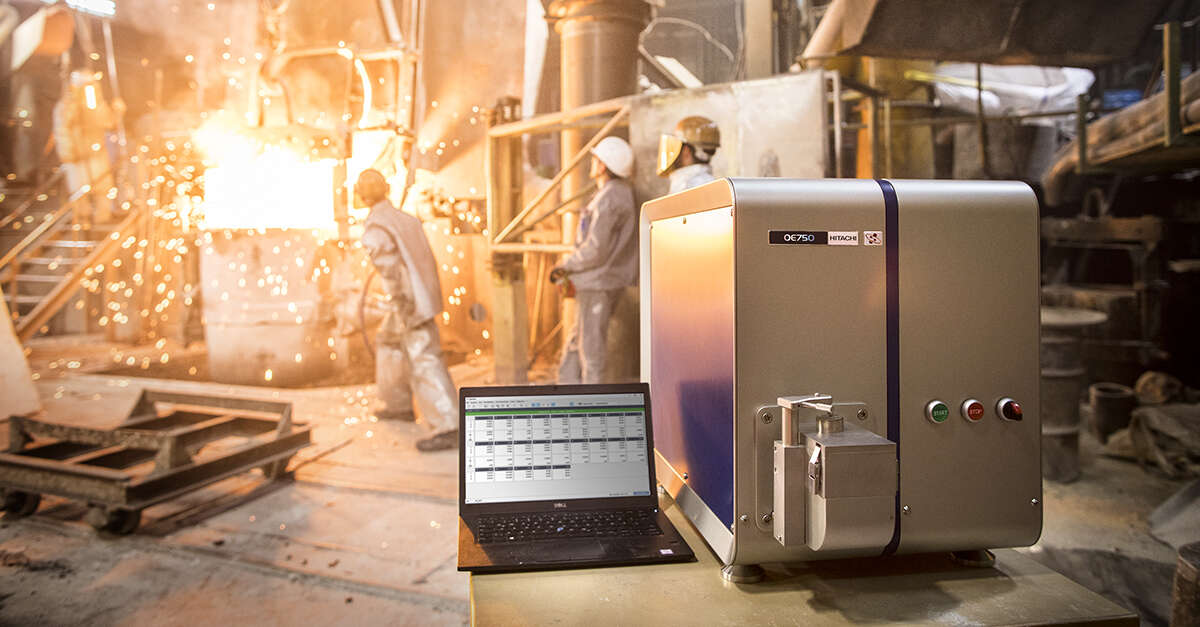The new Hitachi OE750 spark spectrometer can measure the entire spectrum of elements in metals to low detection limits. For us at Hitachi High-Tech, this was the goal for the OE750 development team and why we ended up designing a completely new optical concept and using a different detector technology. Our view is that detection limits of below 10ppm or >1 ppm (depending on the application and element) across the board are essential for today’s metals quality control. Here’s why.
Residual elements that are in the mix, yet not part of the specification, need careful monitoring. This is especially the case when using scrap as a source material as scrap metal is a significant source of residual metals. The presence of these elements can have a significant effect on the properties of the finished product, and some products are more sensitive than others, such as low carbon and low alloy steels.
The most common residuals are copper, nickel, chromium, molybdenum and tin. Let’s take the example of tin and discuss the effect of this element on steel. Sn increases strength and hardness, but reduces ductility, impact resistance and strain hardening. Its presence also affects processing conditionings, such as recrystallisation, and can cause embrittlement of grain boundaries.
Essentially, control of trace elements is meeting the specification of the alloy grade. It’s beyond the scope of this article to discuss the many different grades of cast iron, steel and aluminium. However, to illustrate the point, we can discuss boron in carbon steel. Adding boron in very small amounts (as little as 3ppm) improves hardenability. However, above these levels the boron segregates from the steel and settles in the grain boundaries which reduces hardenability, weldability, toughness and causes embrittlement. The level of boron must be monitored very carefully as minute amounts have such a significant impact on the material.
This is the control of elements that are added in the casting process that affect the structure, such as inoculating elements in cast iron, or modifiers in aluminium casting. These often have to be controlled to less than 10ppm.
For example, in aluminium casting strontium and sodium are modifiers that remove aluminium phosphide (a nucleant for silicon) and produce a structure with improved ductility. However, these modifiers are poisoned by the presence of phosphorous, antimony and bismuth. To ensure the modifiers are doing their job, it’s essential to monitor and control the levels of the pnicogens.

Many ASTM test methods call for very low levels of detection by spark emission spectroscopy. A notable example is the 2017 revision of the ASTM E415 test method. The guidelines state composition ranges for 21 different elements, ranging from aluminium to zirconium. Possibly the most challenging for typical spark spectrometers is the nitrogen level, which is why the OE750 has been developed to measure N to below 10ppm.
So far we’ve discussed the impact of known quantities on material properties, melt chemistry and meeting standards, but with the increased use of scrap metal as a feedstock, we may see more unfamiliar elements introduced into the melt and those properties will need to be monitored closely. To fully understand and investigate effects on melt chemistry and material properties, it’s necessary to analyse the full composition at very low detection limits
The OE750 spark spectrometer is able to analyse all alloying, treatment, trace, residual and tramp elements for steel, iron and aluminium applications.
To find out more about how the OE750 brings you ultimate quality control, get in touch to arrange a demo.
Get in touch